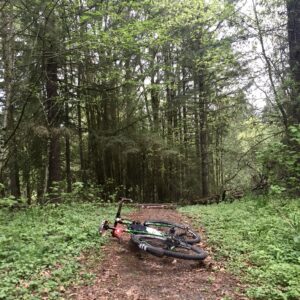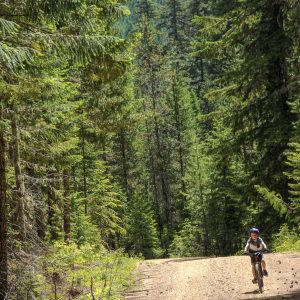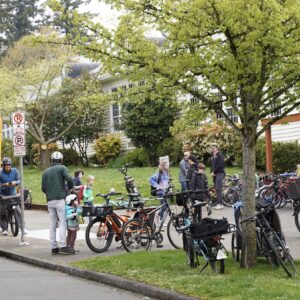
(Photo: Multnomah County)
Not to be outdone by ODOT, Multnomah County has issued a special notice about upcoming chip seal work. This is particularly important for people who ride because the county happens to manage very popular cycling routes like Sauvie Island, Skyline and Larch Mountain.
Read the advisory below for all the details and alter your plans accordingly (might want to ride wider tires if you can):
Multnomah County’s Transportation Division plans to lay down a chip seal paving treatment on a number of rural county roads in the next few weeks. Travelers will experience delays on days when layers of oil and gravel for the chip seal are applied and swept. Roads will remain open in both directions, with flaggers and pilot vehicles guiding traffic when a lane is closed. Work is scheduled Mondays to Fridays, from 6 a.m. to 4:30 p.m.
Chip seals are a cost-effective paving treatment on rural roads with lower traffic volumes. Some roads require a two-step process of applying layers of gravel and oil. Until the final layer is applied, motorists should watch for “loose gravel” signs and drive cautiously.
Road segments that will be chip sealed and work dates are:
July 18-19: NW Sauvie Island Road (from bridge to Reeder Road)
July 20-21: NW Reeder Road (from NW Sauvie Island Road to milepost 3)
July 22 & 25: Sweep and add fog seal topcoat to NW Sauvie Island and NW Reeder roads
July 26: NW Johnson Road (from NW Skyline to NW Beck Road)
July 27 – 28: NW Skyline Blvd. (from NW Johnson Road to NW Rock Creek Road)
July 29 & August 1: Sweep and add fog seal topcoat to NW Skyline and NW Johnson roads)
August 3 – 8: East Larch Mountain Road (milepost 5 to milepost 7) and East Haines Road (from Larch Mountain Road to milepost 1)
August 5 & 8: Sweep and add fog seal topcoat to Larch Mountain and Haines roads
August 9 – 11: SE Dodge Park Blvd. (from SE Pleasant Home Road to SE Cottrell Road) and SE Division Drive (from SE Oxbow Parkway to SE 317th Ave.)Dates are subject to change due to weather and equipment availability. Brief traffic delays will be needed when crews return to apply lane striping after the chip seal. Motorists can use alternate routes to avoid delays, which could be as long as twenty minutes. Traffic using side streets and driveways adjacent to the paving may experience brief delays during a rolling closure.





Thanks for reading.
BikePortland has served this community with independent community journalism since 2005. We rely on subscriptions from readers like you to survive. Your financial support is vital in keeping this valuable resource alive and well.
Please subscribe today to strengthen and expand our work.
Chip seal sucks!!!
I can’t remember, without going through a web search, how much of a savings chip seal resurfacing is, over the cost of smooth surface asphalt road sealing. Now would be a good time to have that information at hand.
Chip seal quality of riding can vary. Some surfaces paved with it aren’t too bad, but others can be very rough, regardless of how fat your tires are. Even driving a car on chip seal can feel very rough, and noisy inside the car, unless it’s one with lots of sound deadening insulation.
People that bike know that rougher road surface is less efficient in terms of energy used to roll over the surface. Energy efficiency of road surface quality, is relevant to motor vehicle use too. A rougher surface will require more fuel consumption. A rough surface will wear tires faster, compared to rolling over smoother asphalt surfaces.
Three of my standard go to rides. : (